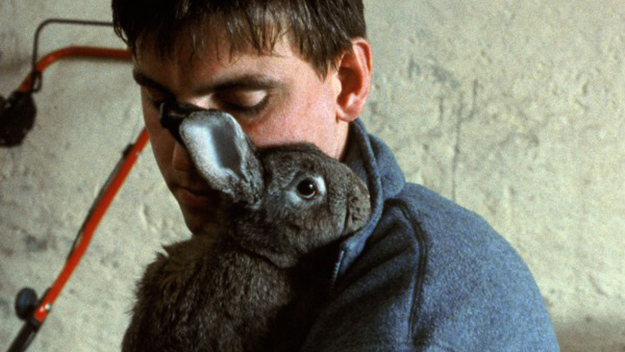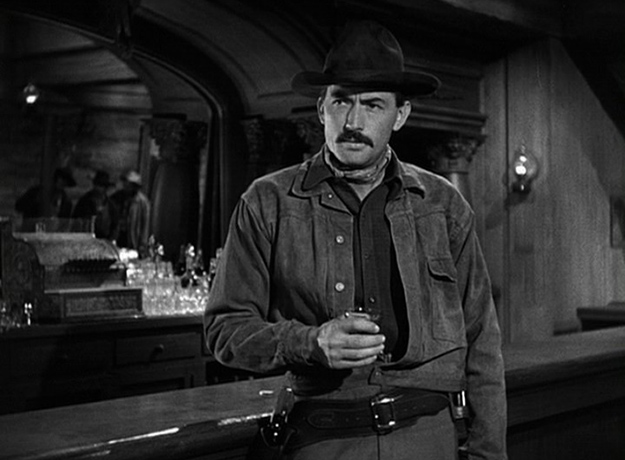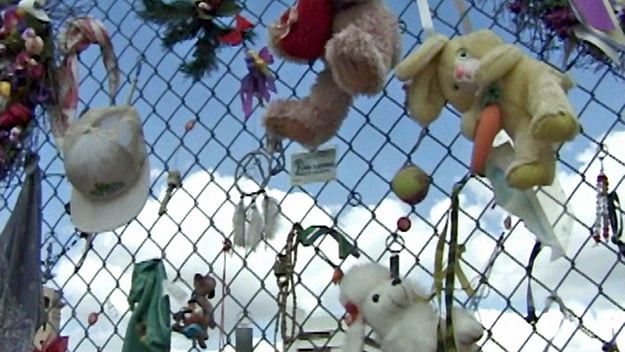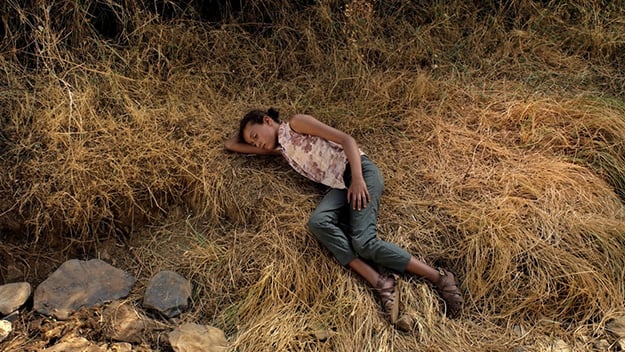Longing The 55th edition of the Viennale was unmistakably a transitional one. With the passing of the festival’s beloved director Hans Hurch in July, just three months shy of his 20th Viennale, the atmosphere this year was marked by reflection on Hurch’s highly regarded tenure as well as speculation about what might become of this most esteemed and pleasurable of film festivals. Three-quarters of the typically eclectic slate was programmed at the time of Hurch’s death, effectively rendering the 2017 edition both his last at the helm and the first in his absence, a slightly paradoxical superimposition that Derrida might’ve appreciated. (The completion of the programming was overseen by interim artistic director Franz Schwartz, the former head of Vienna’s Stadtkino am Schwarzenbergplatz and a member of the festival’s board of trustees.) What becomes of the festival going forward is anyone’s guess, but the 2017 Viennale ably took stock of the year in cinema while also mournfully and appreciatively examining Hurch’s legacy as a mutually enriching point of exchange between the medium’s past and present. A highlight of this year’s festival toasted a highlight of the year in cinema at large: a retrospective and accompanying carte blanche for the German director Valeska Grisebach, occasioned by the Viennale’s selection of her latest, the 2017 festival circuit staple Western. Grisebach’s oeuvre consists of just three films—Be My Star (2001), Longing (2006), and now Western—but she’s safely three-for-three, each film a subtle, carefully wrought work marked by an incomparably delicate way with nonprofessional actors and pervaded by the sense of regional specificity resulting from the years of meticulous research and milieu-immersion she performs before shooting begins. (This partly accounts for the relatively long stretches of time that separate her three features.) But these films are also clearly the output of a consummate cinephile who has thoroughly thought through the movies that move her, and so the Viennale had the winning idea of inviting her to pick a film to pair with each of her own. Her selections were note-perfect: the understated and unsentimental teen-romance of Be My Star fit naturally alongside Maurice Pialat’s Graduate First (1978), and her masterful and comparatively weightier tale of the heart, the state and the countryside, Longing, rhymed in surprising and elegant ways with Miloš Forman’s Loves of a Blonde (1965). But perhaps her most inspired selection was to pair Western, one of the year’s most deservedly celebrated films, with an underrated Western by an underrated auteur, Henry King’s The Gunfighter (1950). Whereas Western chronicles the experience of a small group of German contractors setting up shop in rural Bulgaria to begin building a hydroelectric power plant—strangers in a strange land, one might say—The Gunfighter concerns itself with one man’s unwelcome homecoming. An infamous gunslinger, Jimmy Ringo (Gregory Peck), is targeted by a brash hotshot eager to make a name for himself; Ringo winds up shooting him in self-defense, and is instantly pursued by the young man’s three vengeful brothers. Pressed for options, Ringo returns to the town of Cayenne, home of a former lover (Helen Westcott), with whom he fathered a young son some years back. Cayenne is also home to two of Ringo’s only friends in the world, a kindly barkeep (Karl Malden) and a righteous marshal (Millard Mitchell). But the mere fact of Ringo’s presence, holed up in a saloon, becomes not only a local spectacle but a veritable magnet for a handful of self-serving knuckleheads and everymen deranged by the mistaken promise of revenge.
The Gunfighter King and Peck portray the fictional Ringo with mythological reverence, much like how John Ford and Henry Fonda handled the historical Wyatt Earp in My Darling Clementine (1946). But King takes even greater care than Ford did to forward a sense of Ringo as an unwilling participant in the eye-for-an-eye violence of the Old West. Apart from his innovative preference for location shooting and his tendency toward episodic narrative structures (the plot of The Gunfighter is linear yet all too eager to digress wherever possible), King is, like Grisebach herself, sociologically astute: Ringo’s return rocks the people of Cayenne, and we see the reverberations in vivid detail. It’s the flip side of Grisebach’s German laborers, a gang of men descending on a small, provincial community and, save for that film’s protagonist (Meinhard Neumann), making no particular effort to get along with the locals. The two camps in Western don’t share a language, and communication between the two sides of its central conflict proves nigh impossible. In The Gunfighter, it turns out the only truly common tongue among Ringo and his antagonists is deadly violence, reluctant as our hero is to speak it. In Western, the central conflict’s resolution is necessarily ambiguous, inseparable from the broader globalization that enabled it in the first place. In The Gunfighter, the resolution is necessarily tragic yet marked by the future possibility of something resembling peace and mutual understanding. Grisebach’s carte blanche wasn’t the only instance of filmmakers trying their hand at programming: “14 Friends, 14 Films,” a tribute to Hurch that ran throughout the festival, saw a host of Viennale regulars (among them, Agnès Varda, Jem Cohen, Alain Guiraudie, and Kelly Reichardt) invited to select movies that, in their minds, exemplified Hurch’s programming philosophy. The Hurchian ethos is, as the festival’s catalog put it, “directed against the concept of cinema as an illusion machine that excludes conscious awareness, and against the accelerated dictates of the present,” leaving considerable latitude for the guest programmers to interpret what cinema might have meant to Hurch. One such selection was Budd Boetticher’s lean, mean Comanche Station (1960), chosen by the German documentarian and pedagogue Hartmut Bitomsky. The openly shoestring film stars Boetticher axiom Randolph Scott as a man whose wife has been captured by the titular tribe. He winds up rescuing another man’s wife (Nancy Gates), though she doesn’t trust him due to a $5,000 reward her husband has offered in exchange for her safe return. They’re quickly joined on their way home by three duplicitous outlaws scheming to off Scott from the moment we meet them and collect on the reward themselves. There aren’t many surprises in how the narrative in Boetticher’s elemental Western resolves itself, though that seems wholly the point: Comanche Station is hard, tight, and bereft of embellishment (and all the more evocative for it), a work that, simply put, wastes little to no time getting to where it’s going. But it’s the craft that leaves the strongest impression, with Boetticher’s efficient use of outdoor locations and some especially striking instances of day-for-night clarifying his position within the spendthrift-visionary tradition of Edgar G. Ulmer, Joseph H. Lewis, Roger Corman, and the like.
Shakkei. Borrowed Landscapes Bitomsky also premiered a new film of his own, Shakkei. Borrowed Landscapes. The landscapes to which the film’s title refers are altogether different than those of Grisebach’s, King’s, and Boetticher’s Westerns, though: shakkei is the Chinese and Japanese gardening (and, later, architectural) principle whereby the surrounding landscape is exploited to effect within a new garden’s design. The landscapes “borrowed” in Bitomsky’s sprawling essay film are conceptual—an intellectual terrain of historical facts, philosophical and aesthetic ideas, and their complex interrelations. But this is also a record of the physical environs of nuclear test sites, airfields, and the sundry other spaces. He explained in his onstage introduction that the radically digressive Shakkei is largely comprised of pieced-together footage that was shot for his previous films—most notably B-52 (2001), which explored the bomber plane as a multifaceted symbol of American culture and American Empire alike. At nearly three hours in length, Shakkei branches out from the bombers to encompass the Vietnam War, radioactive waste, contemporary artistic practices that repurpose the detritus of military science, graffiti, and (of course) film aesthetics. Bitomsky’s work trades in the free and sometimes jarring juxtaposition of disparate subjects, and the manner in which he casually traces connections between trash, the military-industrial complex, memory, and art embodies Walter Benjamin’s idea from his 1940 “Theses on the Philosophy of History” that a “chronicler who recites events without distinguishing between major and minor ones acts in accordance with the following truth: nothing that has ever happened should be regarded as lost for history.” At one point in the film’s voiceover narration, which is read by the director himself, Bitomsky muses about the aesthetic and epistemological value of images captured so hastily out of necessity that considerations of composition and beauty go out the window. Bitomsky’s “dirty, stinky film” (as he memorably described it to me) persuasively makes the case for an approach to cinematic form whereby the ideas being worked out predominate over any received notions about what constitutes a pretty picture. Mention must also go to two of the year’s best short films, both of which were showcased at Viennale. Spiral Jetty marks a considerable leap for the filmmaker/critic Ricky D’Ambrose. Its coolly conveyed narrative concerns a young archivist (Bingham Bryant) who is hired by the daughter of a deceased and rather controversial psychotherapist/theorist named Kurt Blumenthal to organize his papers, tapes and various other materials. An assortment of masterfully fabricated articles from The New York Times, The New Yorker, and the like reveal that this radical shrink had a complicated legacy indeed, and our hero realizes that his task may be in service of a kind of duplicitous character rehabilitation, if not the suppression of some serious dirt on Blumenthal. That the proceedings have a feeling of genuine drama to them is a testament to D’Ambrose’s facility with the barest of cinematic means: much of the film plays out in tight close-ups of journal entries, newspaper clippings, art reproductions, and handwritten letters, with an unimpassioned voiceover (self-consciously recalling Bresson) connecting some, but certainly not all, of the dots. Cryptic VHS home-movie footage punctuates D’Ambrose’s sparse visual schema, otherwise defined by the aforementioned inserts and frontal medium close-ups of his characters in conversation, changes in location usually signaled by only a change in the color of the wall against which his actors have been posed. Snatches of classical music cohere with a dense, frequently surprising sound design to yield something like a faithful audiovisual evocation of the experience of listening to atonal music (another probable reference-point). Spiral Jetty could readily be described as cerebral filmmaking, but its allusive plot intrigues and persistent sense of faintly menacing enigma suggests both that the machine has a soul and that its director is a true original despite his rather apparent film- and art-historical lineages.
Barbs, Wastelands Marta Mateus’s Barbs, Wastelands is a painterly, political kind-of pastoral that’s fully aware of its resemblance to the cinema of John Ford, Alexander Dovzhenko, Danièle Huillet & Jean-Marie Straub, and Pedro Costa. But the film distinguishes itself from this daunting artistic bloodline by the elegant ways in which Mateus foregrounds her concern with the transmission (and subsequent mutation) of history as it migrates across generations. Shot in Portugal’s Alentejo region, from which Mateus hails, the film’s action largely consists in the older peasants, posed in dark rooms and across hillsides with a precise and striking mannerism, giving a large though rotating cast of local children the lowdown on the Carnation Revolution and its accompanying agrarian reform movement of the 1970s. Mateus tinkers with the Straub-Huillet-esque idea of landscapes as being inscribed with histories (usually written in blood) through an especially refined ear for not just the expressivity of untrained actors delivering their lines in dialect (the cast is comprised entirely of Alentejo natives) but also the ghostly echoes of Portugal’s authoritarian, colonialist past always lingering in the air. “Memory didn’t wish to be erased, like the tools driven into our blood,” an old woman muses at one point while examining her own hands, explicitly connecting the persistence of memory to both the cultivation of the land and the aging of the body. The children’s performances in Barbs, Wastelands are especially striking, introducing a measure of restless energy to the film’s otherwise rigorous succession of tableaux. In one of the only shots marked by camera movement, a boy and a girl walk along a path, arms locked; she faces forward as he faces backward, the camera tracking carefully behind them as they make their way down a hill. Together they comprise something like a Janus-headed twist on Paul Klee’s Angelus Novus, gliding ahead with half of its double-gaze fixed upon something in the past and the other half upon a future that, under the right conditions and however improbably, might just redeem that which came before. It’s an image that resonates strongly seen in the context of a film festival that finds itself at the outset of a moment of profound transition, faced with the considerable challenge of both preserving and building upon the achievements of Hurch’s tenure. Dan Sullivan is the assistant programmer at the Film Society of Lincoln Center.



